Dina’s Diner 1/18/16
WHAT IF IT WAS EASY?
I recently read an essay by the late writer David Foster Wallace titled “Hail the Returning Dragon, Clothed in New Fire.” The essay, written in 1996, discussed the effect of social and physical impediments on sexual desire. Foster was spurred to write the essay as HIV began spreading outside the gay community to “threaten” heterosexual hookups. An acquaintance had written to him that “it is possible to be encouraged by the human will to [have sexual relations], which persists despite all sorts of impediments.” But Wallace felt that the great human quality was not the biological urge for sexual relations (which is purely animal instinct) but the heightened level of interest and passion that social or natural impediments place in our way.
Wallace reminds his readers of the story of the heroic knight and his fair maiden. In his effort to rescue the maiden, the knight is ready to do battle with dragons, scale castle walls, and place himself in physical danger for the purpose of making the maiden his own. In coarser terms — having sex with the virginal maiden. He expounds further, “passion has endured for millennia as a vital psychic force in human life — not despite impediments but because of them.” His thesis is that without the challenges of the mating process, the human passion would be lessened. If the knight could easily, uh, bang the maiden, without all the anticipation and forestalling of the various impediments, would he really care as much? We would be reduced to animal mating without all the psychic energy expended on the process of conquest which heightens the level of desire and is uniquely human.
I think there’s something to Wallace’s idea and it also carries over — I think — to other passionate pursuits as well. For our purposes: would crossdressing be as exciting for us if it was socially acceptable and didn’t require subterfuge, fear of discovery, and breaking social taboos? I speak now only for “typical” crossdressers, not genuine transgender persons who have a different internal dynamic underlying their transformations. Maintaining the secret of crossdressing is both the maddening and the exciting part of the compulsion for many of us, I believe. If we could openly discuss our crossdressing interests and experiences with family, friends, and co-workers some part of the electricity would be discharged. It might be fun to live in a world where crossdressing is completely accepted by society — for a while. But if society yawned at the sight of crossdressers, would our own yawns soon follow?
We are not close to that ideal (?) society and in no imminent danger of being accepted without the odd look or the dismissive comment. There may come a time when it could happen given the speed with which other changes have occurred. It wasn’t so long ago that hippies, hare krishnas, punks, and goths were viewed as oddities and then rapidly blended into their respective crannies of society without much notice. Did society’s eventual acceptance of those earlier movements contribute to their demise? Oh, but societal acceptance could never kill crossdressing you might say. Or could it?
ABOUT A BOY
On January 7, 2016, many Internet news sites carried the story of 8 year old Ethan Wilwert, a Florida boy who is fascinated with cosmetic makeovers. Angela Gardner had an item about Ethan in last week’s TWIT feature. I first saw it reported on The Daily Beast website under the headline “Why Ethan, 8, Looks Great in Makeup No Matter What His Haters Say.”
As the accompanying photo shows, Ethan does look great in makeup. The news reports all make it clear that Ethan requested the makeover after becoming interested in watching in-store makeovers and YouTube makeover videos. His mother obliged the boy’s request and the MAC cosmetics pro who did the makeover taught Ethan as he did the applications. “Me and his mom agreed that if that’s what he wanted, to go for it,” [cosmetologist] Joey Killmeyer told BuzzFeed News. “I treated him like I would any client. He just happened to be 8.” His mother, Season Wilwert, said, “He is a very artistic child and loves to express himself creatively, whether through drawing, gymnastics, or performing arts. This is just another form of that expression.”
As you can imagine, the public reaction to the story varied from supportive affirmations to head shaking condemnations. It’s clear that liberal proponents of self-expression are supposed to be supportive of Ethan’s makeover and his Mom’s permissive attitude. But wait. When young girls are dolled up for pre-teen beauty pageants or fashion photos, there has been a lot of condemnation from some of the same type of people who see that as further evidence of cultural sexism. So if it’s okay for a young boy to wear (a lot of) makeup as self-expression, why put down the pageant girls and Moms as cultural dinosaurs for using the same makeup?
That question having been posited for your consideration, I know there are some differences in the two circumstances. I don’t see anything wrong with Ethan’s interest in cosmetic transformations and maybe I won’t smirk as quickly the next time I see a story about a pageant mother and her Barbie-ized pre-teen daughter. What’s okay for the gander should be okay for the goose, you could say.
There is another aspect of little Ethan’s Big Cosmetic Adventure that I think is interesting. Nowhere in the articles did it intimate that Ethan felt gender ambiguous and his interest in cosmetic transformation seemed to be purely aesthetic. We are left then with the idea that cosmetics are, after all, inanimate things with no inherent gender of their own. The identification of cosmetics as “female” is entirely societal. Absent all of the cultural baggage, why should men be barred from using cosmetics for purely artistic purposes as Ethan apparently enjoyed. On some level, it’s no different than using crayons to make a blank page more colorful.
Of course, society has developed a multitude of “do this” and “don’t do that” constructs specific to gender roles. So playing with cosmetics, wearing stockings, employing certain physical gestures, etc. are all taboo for men just as many things are frowned upon for females. It’s hard to imagine a world where a boy or man could simply apply cosmetics as an artistic expression without it saying something about gender or sexuality. The purity of young Ethan’s cosmetics quest should point out that it shouldn’t be that big a deal. But if it wasn’t that big a deal — we would have never heard about Ethan in the first place.
LET DOWN YOUR HAIR
The online magazine Slate.com had an article about a staging of the play Rapunzel in the December 30, 2015 edition. The headline caught my eye. “Can Drag Be For Kids? The Commedia Rapunzel Thinks So.” The review was written by Miz Cracker, a New York-based drag queen. The production, which features some drag and some non-drag roles, is onstage at the SoHo Playhouse in Manhattan and is geared for children 6-12 years of age with performances beginning at family-friendly 11 a.m. on Saturdays through January 2016.
The production website has a banner that says “This is ain’t yo Mama’s Rapunzel!” The performers are members of the Spaghetti and Meatball Players, so you know it’s going to be a little unusual. Miz Cracker’s review says, “Like any good drag show, The Commedia Rapunzel operates on two levels. On the surface, it’s a slapstick comedy full of pratfalls and Broadway dance moves that keep kids entertained while the fairy tale unfolds. But it also provides a trail of more adult humor to keep parents and other grown-up audience members on their toes.” The staging is meant to be somewhat audience interactive and the lead performer does his best to get the kids responding to the story. From the Slate article: “You can talk to us, you know,” he says in mock exasperation, looking wildly at the baffled kids around him. “This ain’t Angels in America.” The kids giggle at his physical antics. Their parents release a did he just say that? gasp. With this simple line, [playwright-performer] Sam LaFrage sets the drag-theater tone, creating a space where bad-behavior is welcome from performers and audience members alike. And all this before he even dons his wig.”
Mr. LaFrage said that using drag in the story works because the tale of Rapunzel is about self-acceptance. The article continues: “Through drag and drag aesthetics, LaFrage has created a space that celebrates not just queens or queerness, but oddball behavior in general, encouraging kids to embrace difference before they learn to feel ashamed or afraid. “I’m not trying to give them a crash course in drag or gay culture,” LaFrage told me. “I want to instill the idea that you can dress up and play make believe — and be yourself — and it’s gonna be OK.” Miz Cracker wonders in her review about the kids — or adult — audience members who may be secretly struggling with sexual or gender questions as they watch the madcap story unfold.
It seems perfectly logical that kids would find drag performers entertaining even if they don’t quite grasp the subversive nature of drag performance. If kids are exposed to “age-appropriate” drag performances maybe their sensibilities will be raised to drag or crossdressing as a harmless diversion. Something like a screwball production of Rapunzel may be more effective at planting the seed of open-mindedness than lectures or other “serious” attempts at encouraging acceptance of diversity.
CH-CH-CHANGES
David Bowie became a star while I was in my teen years and the androgynous aspect was interesting to me but not well understood at the time. There were several androgynous music figures and bands in the early 1970s of which Bowie was only one. The album cover of the New York Dolls in teased hair, makeup and high heels; the photo of what appeared to be a drag queen on the back of a Lou Reed album; Mott the Hoople’s collective tight pants and thigh high platform boots; and other images of long-haired, eye-lined and lip-glossed musicians were more fascinating to me than Bowie’s particular image. And musically, I was still too into the Beatles to like Bowie’s music that much at the time.
It wasn’t until much later that I began to admire Bowie as an artist who had navigated through a few different musical styles and image transformations and remained relevant while so many others had fallen by the wayside or stayed stuck in one groove. His Station to Station album was probably my favorite and that had nothing to do with androgyny. Later, I remember liking his songs Ashes to Ashes and Blue Jean and their accompanying videos that played a lot on early MTV. Somewhere in there was the video for Boys Keep Swinging which for all the talk of his “gender-bending” was the only time that Bowie actually did drag so far as I can tell. He appears in a “self-trio” as three female back-up singers and later in full-length where he reveals himself from under the wigs and makeup.
It became clear that Bowie had an artist’s sensibility, working on multiple levels, being influenced by and influencing others. And always one step ahead of everyone else. One commentator eulogized him on television only today saying that Bowie was all about image and artifice throughout his career but the audience saw someone genuine and sincere that was using artifice to connect with them. The opening spoken lines of 1983’s Modern Love are “I know when to go out. And when to stay in. Get things done.” Sounds like someone with more on his mind than just being a pop star. I liked that about Bowie.
THE SWINGING SIXTIES
Even before David Bowie hit the scene and while I was even younger, the swinging and oh, so plastic 1960s were raging. The New York Times marked the passing of French designer Andre Corrueges, 92, on January 7, 2016. I had never heard of Mr. Corrueges until seeing his obit but the photos of some of his kooky fashions from the 1960s caught my eye.
One fashion seller said, “If the words “modern” and “future” exist in fashion, it is because of Corrueges. It changed the concept of couture, marking the turn of fashion into a new era.” According to the Times, Corrueges did not like anything that restricted movement — like corsets, bras and most of the way women were traditionally clothed prior to his rise in the world of fashion. “A woman is never more beautiful than when she is naked” he reportedly said. The Times noted that is a peculiar sentiment for a man trying to make clothes for a living. Nevertheless, he made fashions that allowed movement — odd shift-like minidresses, with low-heeled boots and strange helmet-like hats inspired by astronaut suits.
I was always inspired by the heavy, restrictive girdling, corsets, and brassieres of the early 1960s and still am to this day. But I also liked the crazy, artificial Sixties looks that incorporated plastic or vinyl pieces, “mod” graphics, and anything that seemed to send the message that the female wearing those fashions was a little “out there.” If you couldn’t be a classic Kim Novak or Barbara Eden in carefully molded dresses, maybe you could be Judy Carne or Goldie Hawn in some crazy Mod get-up. Unbeknownst to most of us civilians, Andre Corrueges was behind some of those screwball designs almost fifty years before his recent passing.
Category: Transgender Fun & Entertainment, Transgender Opinion


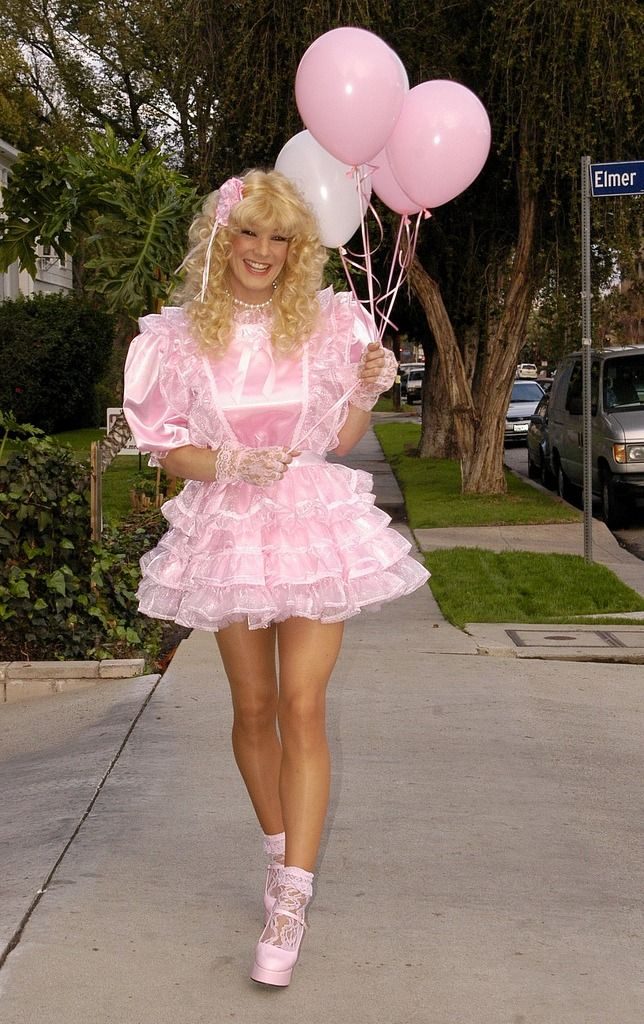
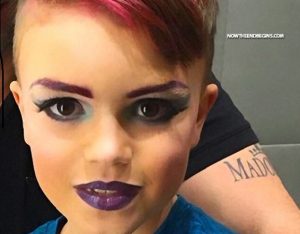
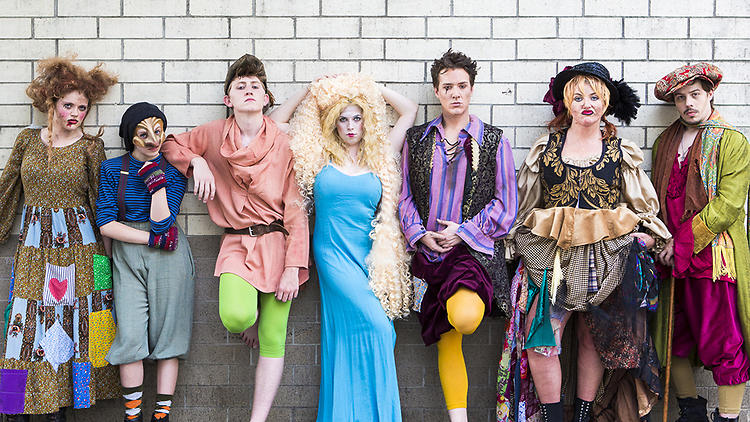
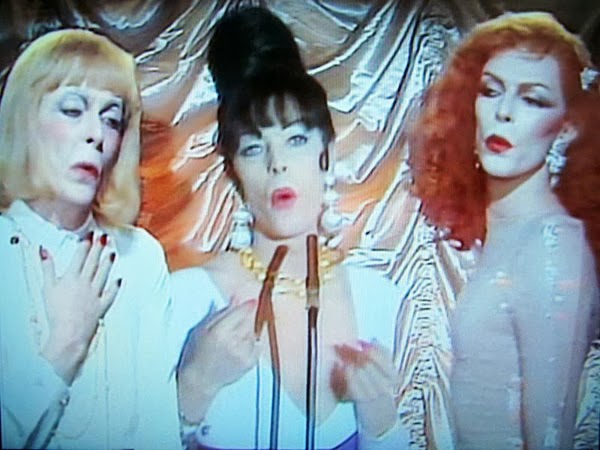
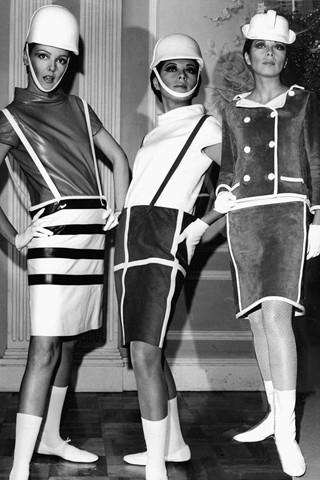









>ABOUT A BOY
If you want to dress up your child in makeup…can’t stop you.
I suggest a responsible adult would not post it on the internet.
Beware the use of children to advance your trans agenda.
“would crossdressing be as exciting for us if it was socially acceptable and didn’t require subterfuge, fear of discovery, and breaking social taboos?”
Damn, you hit the nail on the head there, Dana. Eluding discovery has always been a big part of the thrll for me.
Years ago going to the mall meant asking myself if I looked convincing enough to not be ‘read’. Teenagers were always particularly quick to spot the mistakes in dress and make up and quick to point it out.
Now is it that I’m not being read or that people just don’t care to look at other people? And the teens: they are too pre-occupied with their texting to care about me.